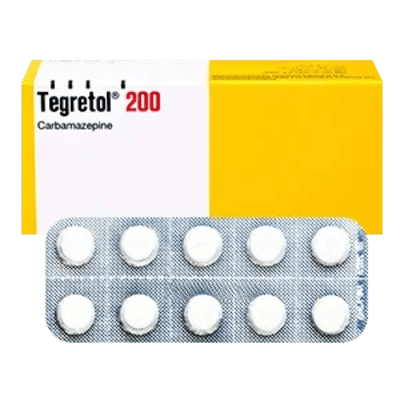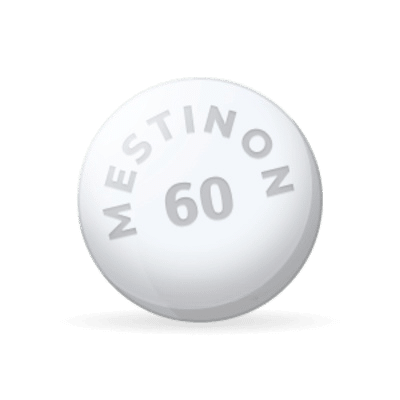Used Tizanidine as prescribed by a doctor to relieve muscle spasms after a back injury. The spasms became significantly less intense after just a few days, the pain decreased. I was a little bothered by drowsiness, but I am happy with the effect.

Tizanidine
Active ingredients: Tizanidine- Quality products
- Support 24/7
- Fast delivery
What is it?
Tizanidine is a centrally acting muscle relaxant used to relieve muscle spasms associated with a variety of conditions, such as multiple sclerosis, spinal cord injury, and other neurological disorders. The drug acts on nerve pathways in the central nervous system, decreasing muscle tone and thereby reducing the frequency and intensity of spasms.
Tizanidine works by affecting alpha-2-adrenergic receptors, which results in decreased release of excitatory neurotransmitters and decreased activity of neurons in the spinal cord. This results in muscle relaxation and pain relief. The drug is usually prescribed when muscle spasms are causing significant discomfort and impairing the patient’s quality of life.
Composition
The main active component in Tizanidine is tizanidine, which is responsible for the muscle relaxant effect of the drug. This component affects the central nervous system, helping to relieve muscle spasms and relieve pain. In addition to the active substance, the drug contains additional components that contribute to its stability and improved absorption by the body.
The composition of the drug may include the following excipients:
- Microcrystalline cellulose - used to form tablets and improve their structure.
- Lactose - a filler that helps to achieve the required volume of the tablet.
- Croscarmellose sodium - improves the solubility of the tablet, contributing to its rapid action.
- Magnesium stearate - used as a lubricant that prevents the components of the tablet from sticking together.
- Silicon dioxide - an antioxidant that extends the shelf life of the drug.
The composition may vary slightly depending on the form of release and the manufacturer, but the main active ingredient remains unchanged - it is tizanidine.
How to use?
Correct use of Tizanidine is essential to achieve the desired therapeutic effect and minimize the risk of side effects. The drug is usually prescribed in an individually adjusted dosage, depending on the severity of the condition and the bodys response to treatment. Tizanidine is usually taken orally in tablet form.
The process of use usually includes the following steps:
- Initial dosage. As a rule, treatment begins with a low dose (for example, 2 mg 2-3 times a day) to minimize the risk of side effects. The dosage can be gradually increased under the supervision of a doctor.
- Timing of administration. Tizanidine is best taken with food or immediately after a meal to improve absorption and reduce the risk of stomach irritation.
- Dose adjustment. Depending on the bodys response and the severity of symptoms, the dosage may be adjusted by the doctor until the optimal effect is achieved.
- Gradual withdrawal. If you need to stop taking Tizanidine, do so gradually, under the supervision of a doctor, to avoid withdrawal symptoms and a sharp deterioration in your condition.
If you miss a dose, it is not recommended to double the next dose. You should simply take the drug at your next scheduled dose. Always follow your doctors instructions and do not change the dosage on your own.
How does it work?
Tizanidine exerts its therapeutic action by acting on the central nervous system. The main mechanism of action of the drug is associated with its effect on alpha-2-adrenergic receptors in the spinal cord. These receptors play an important role in the transmission of nerve impulses that cause muscle contraction. When tizanidine activates alpha-2-adrenergic receptors, there is a decrease in the release of neurotransmitters responsible for the transmission of excitatory signals.
This leads to a decrease in neuronal activity, which in turn reduces skeletal muscle tone and reduces the frequency and intensity of spasms. As a result, the muscles relax, which helps reduce pain and improve mobility in patients with diseases accompanied by muscle spasms. This mechanism of action makes tizanidine an effective means of controlling neurological conditions associated with increased muscle tone.
This targeted effect on the central nervous system allows tizanidine to exert a noticeable effect at relatively low doses, which reduces the likelihood of side effects and makes its use safer.
Indications
Tizanidine is prescribed in cases where it is necessary to relieve muscle spasms caused by various neurological diseases. The main indications for the use of this drug are associated with conditions in which increased muscle tone causes pain and limited mobility.
The main indications include:
- Multiple sclerosis is a chronic disease that damages nerve fibers and causes spastic conditions.
- Spinal cord injuries are injuries that can lead to paralysis and muscle spasms.
- Cerebral palsy is a neurological disorder characterized by constant muscle spasms.
- Stroke is an acute cerebrovascular accident that leads to paralysis and increased muscle tone.
- Degenerative diseases of the central nervous system, such as amyotrophic lateral sclerosis (ALS) and other forms of spasticity.
Tizanidine helps patients cope with these conditions, improving quality of life and restoring mobility. It can be used both in acute cases and for long-term treatment of chronic diseases.
Contraindications
- Hypersensitivity to tizanidine or any of the excipients of the drug. An allergic reaction to the active substance may manifest itself in the form of rash, itching, swelling and other serious symptoms.
- Severe liver dysfunction. Tizanidine is metabolized in the liver, and in the presence of liver diseases such as cirrhosis or hepatitis, its use can worsen the condition of the organ and cause toxic effects.
- Co-administration with strong CYP1A2 inhibitors such as fluvoxamine or ciprofloxacin. These drugs can significantly increase the concentration of tizanidine in the blood, increasing the risk of severe side effects, including hypotension and sedation.
- Bradycardia (slow pulse) and arterial hypotension. The drug may additionally reduce heart rate and blood pressure, which is dangerous in these conditions.
- Pregnancy and lactation. The safety of tizanidine for the fetus and newborn has not been established, so its use in these cases is possible only in extreme situations and under strict medical supervision.
Side effects
Like any medication, Tizanidine can cause side effects. Although not all patients experience adverse reactions, it is important to be aware of the possible risks so that you can take action if they occur.
The most commonly observed side effects include:
- Drowsiness is one of the most common reactions, as the drug has a sedative effect. It usually appears at the beginning of treatment or when the dosage is increased.
- Dry mouth is an unpleasant, but usually mild manifestation that goes away over time.
- Dizziness - may occur due to a decrease in blood pressure, especially in the first days of taking it.
- Hypotension - a decrease in blood pressure, especially in patients prone to hypotension or taking other drugs that affect blood pressure.
- Weakness and fatigue - may appear due to general muscle relaxation and the effect of the drug on the nervous system.
- Bradycardia - a slowing of the heart rate, especially when taking high doses.
Frequently asked questions
Tizanidine Reviews and Experiences
Used Tizanidine for cerebral palsy. The drug helped reduce spasms and pain, improved mobility. The effect was felt almost immediately, but I had to control the dose to avoid excessive drowsiness. Overall, the drug copes with its task.
I have multiple sclerosis and muscle spasms are very uncomfortable. The doctor prescribed Tizanidine and after a week it got better. The spasms have noticeably eased and I was able to sleep better at night. However, sometimes there is dry mouth, but this is a minor inconvenience.









